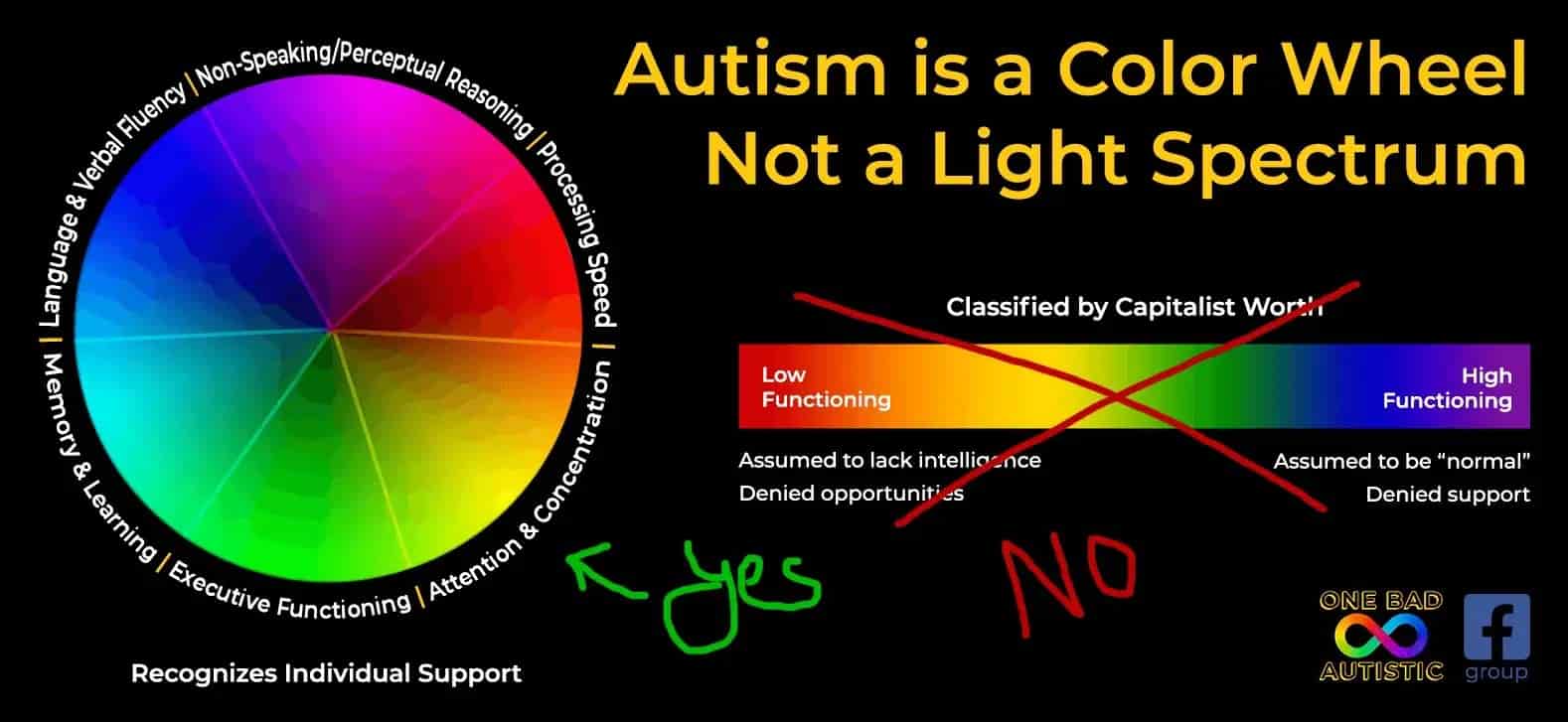What is a Functioning Label?
A functioning label is any descriptor used to categorize autistic people on a linear spectrum based on how well they can pass as a non-autistic person. Examples of functioning labels include:
- Severity levels 1, 2, and 3
- High Functioning / Asperger’s Syndrome (“aspie”) / Severity Level 1
- Low Functioning / Kanner’s Syndrome / Severity Level 3
High Functioning Autism
On one end of the spectrum, you’ve got the high-functioning autistics. These are the people that most would say don’t look autistic. This is also known as level 1 or Asperger’s Syndrome.
Autistics categorized here are often denied support because they don’t appear to be struggling enough from an observer’s perspective.
When adults go their entire lives undiagnosed, they are often in this category because the adults in their lives when they were a child did not believe they needed support.
This is also the desirable type of autism because the general population’s perception is that people with Asperger’s are rude but tolerable because they’re incredibly smart. See Elon Musk.
Low Functioning Autism
On the other end, you’ve got the low-functioning autistics. These people are categorized as level 3 or considered to have Kanner’s Syndrome.
Autistic people with this label usually have comorbid intellectual and language/speech disabilities.
This is the least desirable type of autism because these people will be dependent on others for their entire lives and the perception is that they will never have capitalistic worth or contribute meaningfully to society. It is the parents of this type of autistic child that created the martyr “Autism Warrior Mom” and these people were historically targeted for eradication during the Nazi regime’s “race hygiene” program.
How Functioning Labels are Harmful
If you were disgusted when reading the two previous sections, then you’ll be glad to know that pro-autism advocates for the neurodiversity movement are working to remove all use of these functioning labels, including the three levels of autism. The use of functioning labels and levels wrongly stereotypes autistic people, denying support for those that “appear normal” and denying opportunities for others.

In the current medical system, they inherently determine an individual person’s worth based on how much or how little they can work. Advocates are working to shift societal values on human lives by removing these gross labels.
What To Use Instead
Tell people what you (or your child) need help with when you need that help. Caregivers should discuss the needs of the autistics in their care and where they need support. If someone has a deficit in speech, then discuss accommodations when it’s relevant. It’s unhelpful to talk about people as if we’re all premade, canned packages.
If you are questioning whether you or a loved one may be autistic, check out the diagnostic criteria from the DSM-5.
